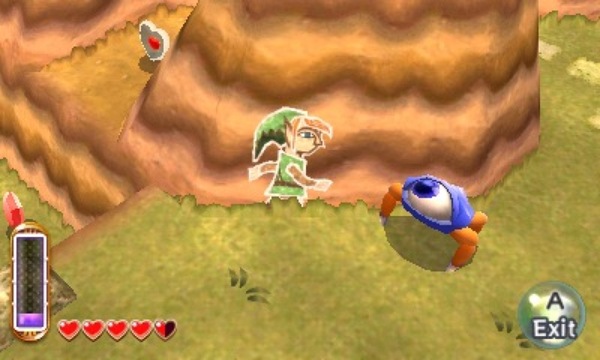
Every new Zelda is always the best Zelda since whatever older Zelda is currently considered the best. We may not agree, but it takes zero seconds of internet time to find would-be game cognoscenti praising every latest Zelda as the greatest since whatever Zelda came out when they were twelve. It’s the circle of Zelda, a love that spans time and space and sucks us back to middle school days while conveniently ignoring whatever Zeldas don’t fit the message.
The Legend of Zelda: A Link Between Worlds is the best Zelda since Wind Waker. I was twelve twice over (plus one) when Wind Waker arrived. A quarter century of excellence.
Nintendo has cannily made this persistence a central part of the Zelda mythos. Every Zelda stars the same hero but a different person, in a different time, sometimes in a different world. We are all Link, when we’re in elementary school, when we’re in college, when we’re sneaking minutes between baby feedings. There are sub-series within this larger framework, and The Legend of Zelda: A Link Between Worlds is a relatively direct follow-up to the SNES’s beloved A Link to the Past. Same overworld map and everything. But even though the world is familiar this is yet another Link, another green-clad boy tasked with saving a girl and a world from an evil sorcerer.
As always the thrill of a Zelda is the sense of growth and discovery that builds up inside as we complete dungeon after dungeon. We start as a boy with a stick and eventually turn into a slightly older boy with a personal arsenal of sporting goods and magic wands. A Link Between Worlds preserves that powerful feeling of progression, even as it fundamentally changes our relationship with the game’s items and power-ups.
Of course there’s a boomerang in this game. There are bombs and shields, bows and arrows, and rods that shoot fire and ice and make sand rise into mighty columns. This is a Zelda game. Instead of finding these items in the depths of whatever dungeon they’re most useful in, though, and having permanent use of them from then on, you have to either rent or buy them from a rabbit-masked shop-keep squatting in Link’s home. Rentals are cheap, usually 50 to 100 rupees, but when you die (which you probably will, eventually) those items are returned to the store. You have to rent them again. It’s a degree of punishment in a game that features minimal punishment for long stretches for play.
I first died so many hours into the game that the loss of my items came as a surprise. I had forgotten that I was just renting them. I didn’t have enough money to rent every object again, so I had to target the ones most crucial to my most pressing goal. And then I had to scrounge up as many rupees as possible in hopes of buying every weapon outright. That is expensive.
A Link Between Worlds is built upon familiarity, but like the rental system it introduces a variety of features that make it stand out from the biennial drip of new Zelda games. Sometimes it’s something as simple as a charming new character, like the witch Irene, who acts as a fast travel system throughout both Hyrule and its dark shadow world Lorule. Sometimes it’s a brand new mechanic that opens up expansive new puzzle possibilities, such as Link’s ability to merge into a wall and move along it as a two-dimensional painting. Sometimes it’s a new fetch quest that’s both completely adorable and a crucial way to make your weapons more powerful, like the game-length side-mission of tracking down lost baby octopi for a magical mother octopus.
The geography might come straight from A Link to the Past, but the dungeons are all new. A few of them cross the threshold from challenging to annoying (I will never visit the Ice Ruins again) but for the most part A Link Between Worlds boasts some of the best dungeon designs of any recent Zelda game. And in a change of pace you don’t have to tackle these dungeons in any specific order. You’re free to approach them however you like, assuming you’ve already found or rented the specific items needed for each specific dungeon. Zelda games are often as beholden to a relative straight line of progress as they are to the past, but here you’re allowed to forge your own path through the dangers of Lorule.
Nostalgia is a powerful force, especially with videogames, and even more especially with Nintendo games. Zelda is a foundational experience for almost anybody who plays games, and that significance, when combined with Nintendo’s recent tilt towards the conservative, has resulted in a series that often feels trapped by its own history. A Link Between Worlds addresses that history head-on, but somehow creates an identity that’s more fulfilling and surprising than any Zelda since Wind Waker. It might have the same map as A Link to the Past, the same overhead perspective, and the same weapons and archetypes that appear in every Zelda. It’s not the same as any Zelda you’ve played before, though, because even this reliably good series is rarely as elegantly designed as A Link Between Worlds.
The Legend of Zelda: A Link Between Worlds was developed and published by Nintendo. It is available for the 3DS.
Garrett Martin edits Paste’s games section and reviews games for the Boston Herald.
